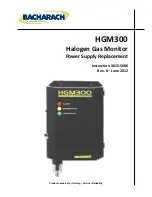
C O I N $ T R I K E T I P $
• Analyze Targets From All Angles
-
This is the best overall rule of thumb to follow, as initial sweeps may indicate a positive
reading on deep iron or hot rocks. The center-of-the-coil vs. target relationship can cause
the numbers to “jump”, so use a slower sweep from different directions. In some instances,
removing some soil can result in a better ID (and a negative reading for iron objects).
•
Diggin’ On Day One -
Don’t be afraid to recover some negative or “jumpy” objects at first. This helps
in the process of learning what information the Coin$trike is offering. Confi-
dence and success will grow after several hours use and when in doubt, DIG!
•
Low & Slow
-
A huge cause of new user frustration centers around running the Threshold
and/or Sensitivity too high for fear of depth loss. Try a Threshold setting of
–20 or -30 combined with a Sensitivity setting below 5 as a better starting point.
•
Take Your time -
The Coin$trike operates best with a moderate sweep speed and by overlapping your sweeps.
Fast “whipping” not only misses items, but can create poor ID’s or “falsing”.
• Auto Ground Balancing -
This is extremely important to the Coin$trike set-up. Be totally certain to balance on an area
totally void of metal. Holding the P/P (pinpoint) pad can assist in locating a “clean” spot.
Ground balancing in All Metal can also help, as the bobbing of the coil up & down without noise
indicates proper balance. Also, be sure to re-balance after changing modes and/or settings.
•
Raise the Coil -
Shallow or large objects can prompt overloads or poor target ID. Lifting the coil up a couple
inches can help determine size, depth, and may even help to drop unwanted trash down several
ID digits. Raise the coil above overloads to be certain of not passing over shallow “goodies”.
•
Use Your Features -
I
n some environments, such as those with heavy mineralization, keeping the Averaging (A1)
and Auto Track functions ON can help stabilize the Coin$trike for smoother operation.
When the Averaging function is OFF (A0), the Coin$trike produces a “real-time” numeric
output, which may cause target ID’s to appear “jumpy” in these conditions. Again, experi-
ment to find suitable settings for each site.
• 99 is Fine -
The old theory that running iron disc maxed out at 99 takes away from depth
is untrue with the Coin$trike. With iron disc at 99, the Coin$trike nulls most
iron, and users should not be hesitant to use this setting in most conditions.
•
Utilize Memory Banks -
Save your favorite settings to be ready for different environments. For example,
MEM 1 can be your “lower level” choice to bring up on a trashy site. MEM 2 may
then be your “hotter” (high Sens/Thresh) settings for better soils, or relic hunting.
•
Tone Trouble?
The 4 higher-pitched tones can, at first, sound quite confusing (especially in trash). Detec-
torists stepping up from a one-tone unit should not get frustrated. Instead, choose a cleaner
(less-trashy) site, and when in doubt, just concentrate more on the LCD reading. It may take
hours to “learn” all the sounds of the Coin$trike.
• All Metal Quick Check -
Toggling into the very sensitive All Metal mode often rewards the user with a more solid ID
number (positive or negative) on jumpy, small, or deep items. Conversely, a relic hunter using the
All Metal mode may choose to do the opposite, and check a target by switching into disc mode.
•
De-tune Pinpointing -
Although many hunters like to “de-tune” with the P/P (pinpoint) pad to further compress






















